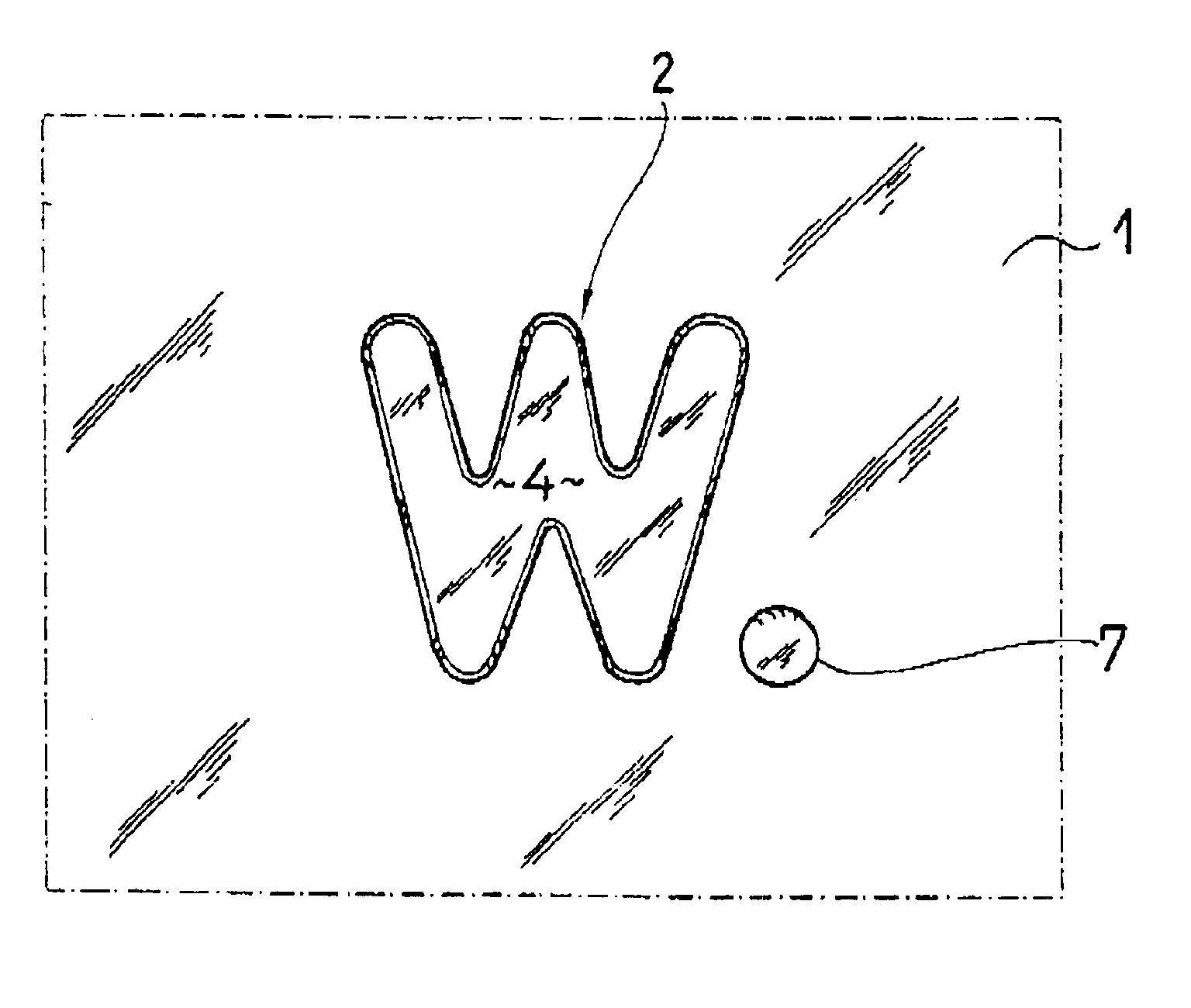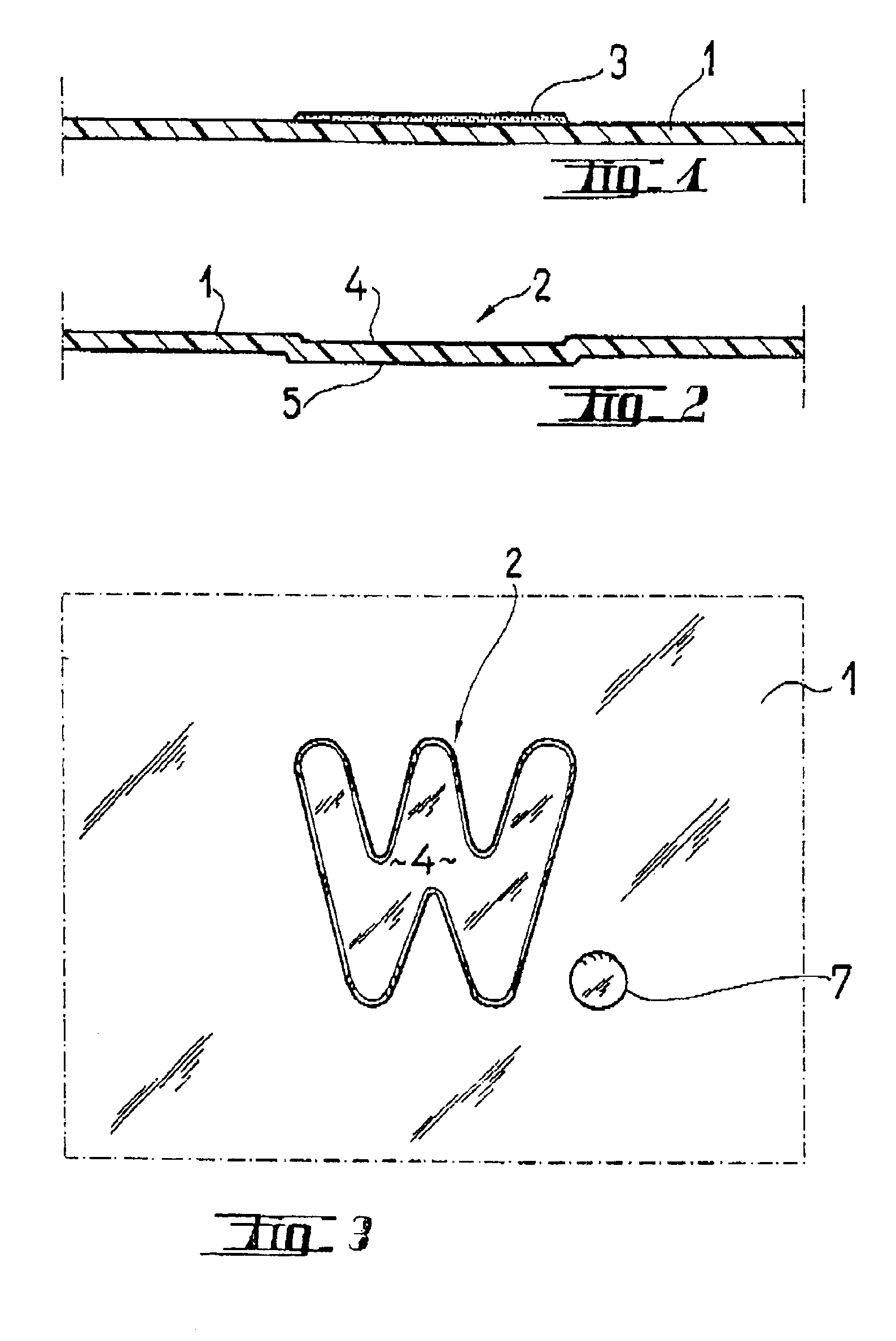Producing a textured effect in a plastic film, and plastic films having a relief pattern made by this method
a technology of plastic film and textured surface, which is applied in the direction of coatings, electrical equipment, plasma techniques, etc., can solve the problems of inconvenient procedure, inability to remove textured surface, so as to increase the thickness and increase the wettability and paint bonding ability.
- Summary
- Abstract
- Description
- Claims
- Application Information
AI Technical Summary
Benefits of technology
Problems solved by technology
Method used
Image
Examples
example 1
(see FIGS. 1-3)
[0035]To manufacture a plastic film with an imprinted effect as is usually used in packaging material, a polyethylene film 1 is used. The film has an approximate thickness of 80 μm.
[0036]For flexodruck printing, a lacquer-solvent mixture 3 is applied to the plastic film 1 (see FIG. 1), so that a localized area of the plastic film that is to have the imprinted effect is located underneath the mixture. Before printing, the plastic film is to be prepared so it can receive the lacquer-solvent mixture by use of the corona effect.
[0037]The lacquer-solvent mixture is an alcohol solution with ethanol as the solution medium. 25 g maleic resin and 10 g nitrocellulose are dissolved in 100 ml ethanol.
[0038]The mixture is applied to the above-mentioned polyethylene film. After the solution medium dries, a thin film results that contracts upon drying and results in a lacquer-laminate layer that deforms the plastic film lying beneath it, with no wrinkling occurring and an imprinted ...
example 2
[0046]The metallized side of polyethylene terphthalate (PET) film 12 μm thick is imprinted using flexodruck printing with no pretreatment. The lacquer-laminate mixture consists of ethanol, in which 25% by weight maleic resin and 6.5% by weight nitrocellulose are dissolved. After the volatile components have evaporated, a recess in the imprinted surface, and thus an imprinted effect, is formed.
example 3
[0047]A plastic packaging film consisting of a low-density polyethylene (LDPE) 80 μm thick is imprinted full-surface using intaglio with pressure ink based on a gold bronze dispersed in nitrocellulose. After this print dries, a lacquer-laminate mixture is applied using counter7print. The lacquer-laminate mixture consists of a propanol-ethanol mixture of equal parts as a solution medium and 25% by weight of fumaric resin and about 5% by weight of nitrocellulose. After the volatile components have evaporated and the lacquer has hardened, a lacquer layer about 1 μm of the imprinted (golden) side remains as an embossed surface.
PUM
| Property | Measurement | Unit |
|---|---|---|
| thickness | aaaaa | aaaaa |
| thickness | aaaaa | aaaaa |
| harden transparent | aaaaa | aaaaa |
Abstract
Description
Claims
Application Information
 Login to View More
Login to View More - R&D
- Intellectual Property
- Life Sciences
- Materials
- Tech Scout
- Unparalleled Data Quality
- Higher Quality Content
- 60% Fewer Hallucinations
Browse by: Latest US Patents, China's latest patents, Technical Efficacy Thesaurus, Application Domain, Technology Topic, Popular Technical Reports.
© 2025 PatSnap. All rights reserved.Legal|Privacy policy|Modern Slavery Act Transparency Statement|Sitemap|About US| Contact US: help@patsnap.com


